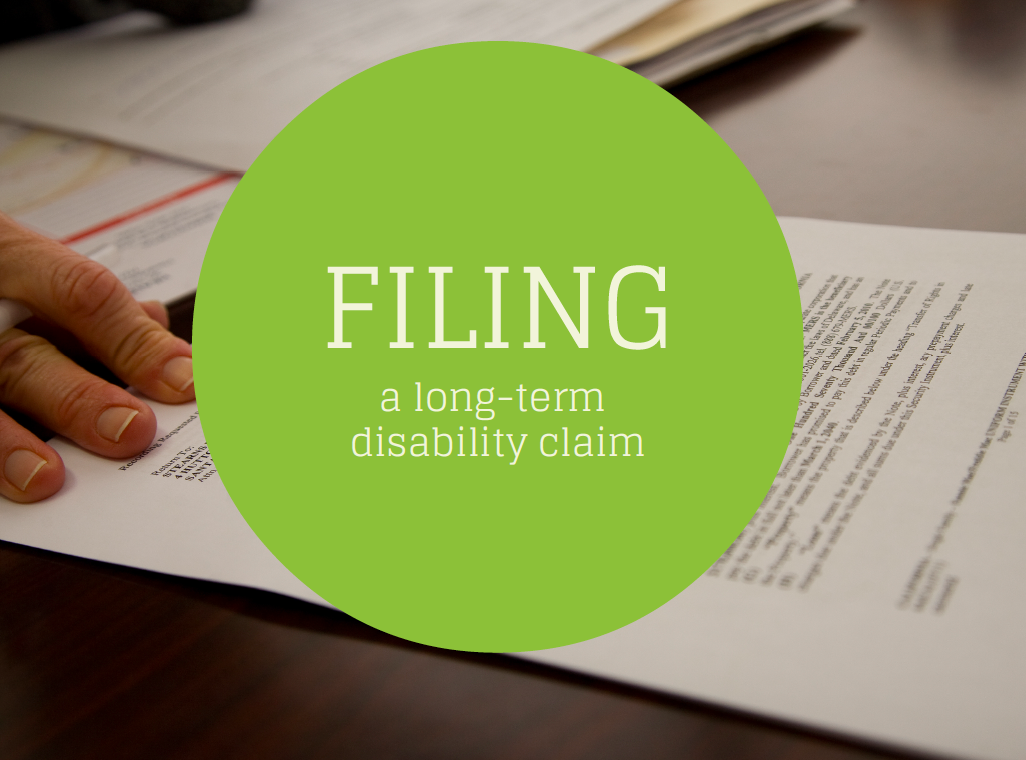
If you are newly disabled and unable to work, you probably have a lot on your plate. But if you anticipate your disability lasting awhile, it’s a good idea to get your long-term disability claim started right away.
Speed and organization are two keys to make the process as smooth as possible.
We’re here with a little bit of info to help prepare you so you can get the ball rolling. That way, you won’t have to suffer from lost income for any longer than you need to.
Here are a few tips for getting the process started:
Don’t Put it Off
You might think there’s a chance your condition will improve and you will be able to get back to work pretty quickly. If that’s the case, great!
However, if there’s any realistic chance you’ll need your disability benefit, get started on your claim as soon as you can.
Your insurance company needs time assess your disability claim—don’t be surprised if it takes 60 days or more for your claim to be processed.
If you end up getting back to work before you actually begin to collect benefits, you can always cancel the claim.
Filing a Long-Term Disability Claim: Getting Started
Before you file your disability claim, start by taking a good, hard look at a copy of your policy.
If you don’t have a copy, you can get one through your employer if you have a group plan, or through your insurer if you have an individual plan.
Read through the policy and look for deadlines. There may be deadlines for:
- Your initial claim
- Medical records
- Any appeals you may end up needing to file
Knowing these deadlines is crucial, as a missed deadline could mean your disability claim is denied.
Next, pay careful attention to the definition of disability your policy covers. You may be covered if you can’t work your particular job, or you may only be covered if you can’t work any job at all.
Last, be sure you understand waiting periods and exclusions.
A waiting period (also known as an exclusion period) could last anywhere from three to six months.
You should have a short-term disability policy that will cover your income during your waiting period.
If you don’t have a short term disability policy, you may need to rely on the paid time off you have available from your employer coupled with savings to get you through.
You will also want to note if there are any conditions that aren’t covered by your policy. Examples of common exclusions include:
- Preexisting conditions
- Drug abuse
- Acts of war
- Disabilities that resulted from your actions while you were committing a crime
Gather Medical Evidence
Your insurance company will generally provide you with documents that your physician will need to fill out in order to file your disability claim. They will also obtain your medical records.
It’s a good idea to do your best to review all of the documents before they’re sent to the insurance company to ensure they’re accurate.
You also may want to ask your doctor for a supplemental, detailed report about how you are disabled and what your exact limitations are.
The website Disabilitysecrets.com offers this advice:
Be sure your doctor does not simply write that you’re ‘disabled,’ as this is a legal term, not a medical one. Your doctor may charge you for writing a detailed report, but this is usually money well spent.
Keep Good Records
It’s wise to keep copies of everything you file with the insurance company, and note when and how you submitted the information.
Hopefully, your claim will be processed smoothly and you won’t have any issues, but if you do, your careful records-keeping will pay off.
This documentation can also simply be useful as you’re tracking the progress of your claim.
Don’t Get Overwhelmed
We hope these tips help you get your long-term disability claim started.
If you find yourself facing a long-term disability claim, try not to get overwhelmed.
There may be a good bit of paperwork, but the process is not designed to be overly arduous.
Work with your insurance company, ask them plenty of questions if you need to—after all, you’ve been paying them premiums so they’d be there for you when you need them.
Photo by Caitlin Childs, illustration via Canva.com




